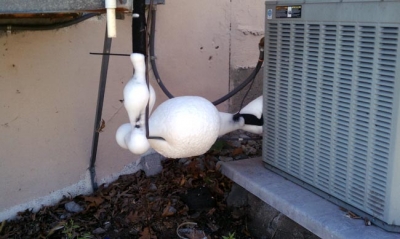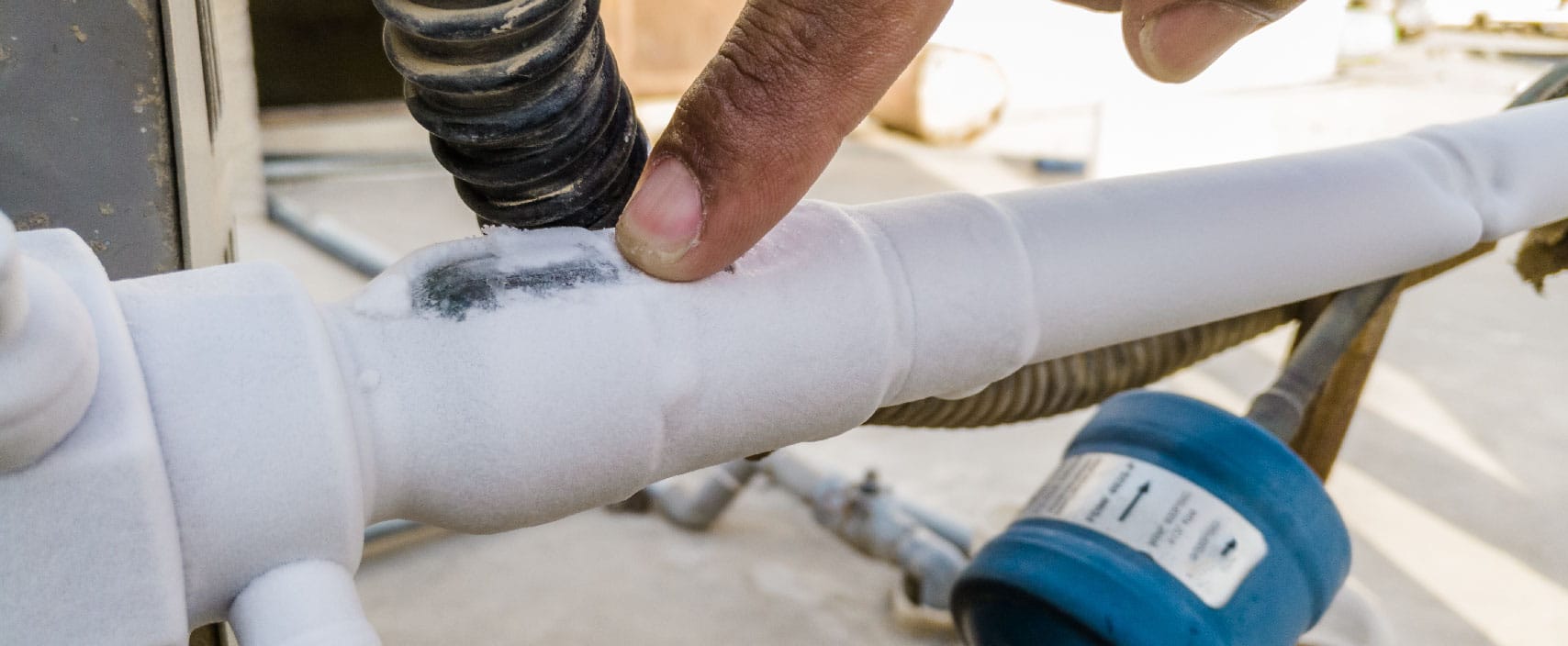Identifying a Frozen AC Pipe - Effective Solutions for Home Cooling Systems
Identifying a Frozen AC Pipe - Effective Solutions for Home Cooling Systems
Blog Article
They are making several good pointers relating to What Causes AC Pipes To Freeze? as a whole in the article in the next paragraphs.

Intro
Discovering that your a/c pipe is iced up can be concerning, specifically during warm summertime when you count on your ac unit the most. Comprehending what to do in such a scenario is important to prevent additional damages to your air conditioning system and guarantee your convenience indoors.
Comprehending the Causes
Numerous aspects can contribute to the freezing of an a/c pipeline. Recognizing these reasons can aid you resolve the issue efficiently.
Absence of Airflow
One usual source of an icy AC pipe is inadequate air movement. When the air flow over the evaporator coil is limited, it can cause the coil to drop below freezing temperature, leading to ice formation on the pipe.
Low Refrigerant Levels
Not enough refrigerant levels in your air conditioning system can additionally lead to a frozen pipe. Reduced refrigerant levels can trigger the stress in the system to go down, resulting in the freezing of moisture on the evaporator coil.
Cold Weather Conditions
In colder climates, freezing temperatures outside can add to the cold of a/c pipes. If your air conditioner device is not effectively shielded or if there are leaks in the ductwork, chilly air can penetrate the system, creating the pipeline to ice up.
Dirty Air Filters
Dirty or stopped up air filters can limit air movement in your air conditioner system, leading to different concerns, including a frozen pipeline. It's important to change or clean your air filters routinely to guarantee correct airflow and protect against ice build-up.
Indications of a Frozen Air Conditioner Pipe
Acknowledging the signs of an icy a/c pipeline is crucial for punctual activity.
Lowered Airflow
If you observe a substantial decrease in airflow from your vents, it could indicate a frozen pipe.
Ice Buildup on the Pipe
Noticeable ice build-up on the refrigerant line or the evaporator coil is a clear sign of an icy air conditioner pipe.
Unusual Sounds from the Unit
Uncommon noises, such as hissing or gurgling, coming from your air conditioning unit can signal that there's ice present on the pipe.
Immediate Actions to Take
When confronted with a frozen a/c pipe, it's necessary to act swiftly to stop more damages to your cooling system.
Shutting off the AC
The very first step is to shut off your ac system to stop the system from running and intensifying the concern.
Looking for Blockages
Inspect the area around the indoor system for any kind of blockages that may be blocking air movement, such as furniture or curtains.
Defrosting the Pipe
You can make use of mild methods like putting towels soaked in warm water around the frozen pipe to help thaw it slowly.
Preventive Measures
Taking preventive measures can help prevent future events of a frozen AC pipe.
Routine Maintenance Checks
Arrange normal upkeep consult a specialist HVAC service technician to ensure that your a/c system is running successfully.
Changing Air Filters
Routinely replace or clean your air filters to prevent air movement limitations and maintain ideal efficiency.
Protecting Exposed Pipes
If your AC pipes are revealed to cold temperature levels, think about shielding them to stop freezing throughout winter season.
Seeking Professional Help
If DIY techniques fall short to deal with the concern or if you're unsure regarding exactly how to continue, it's finest to seek help from a certified HVAC professional.
When DIY Methods Fail
If your efforts to thaw the pipeline or address various other problems are unsuccessful, it's time to hire a professional.
Relevance of Hiring a Professional HVAC Technician
A licensed HVAC specialist has the knowledge and tools essential to identify and fix issues with your a/c system safely and effectively.
Final thought
Taking care of a frozen air conditioning pipe can be an aggravating experience, but understanding exactly how to respond can assist decrease damage and bring back comfort to your home. By recognizing the reasons, recognizing the indications, and taking punctual action, you can efficiently address the problem and protect against future events.
Frozen AC Line: Why It Happens & What To Do About It
A frozen AC line can be a rather peculiar sight in a place like Phoenix, Arizona where nothing ever freezes. In this post, we’ll discuss what makes an air conditioner line frozen – and what you can do about it.
Dirty Air Filters
Did you know that you should be cleaning or replacing your air filters on a monthly basis? Failing to do this can result in airflow issues that, in turn, cause your evaporator coils and lines to freeze over. You’ll notice a buildup of ice on both components, although the buildup on your pipes will, of course, be more evident unless you open your air condition up to reveal the coils.
What To Do About It
Give your air filter a good cleaning if it’s reusable. If not, replace the filter outright. Next, switch your air conditioner’s fan setting on and leave it there for 2-3 hours. This will draw warm air in, helping to thaw your evaporator coil. You can also check out this article for some tips on cleaning the coils themselves if you’d like to speed the process up. Before you switch the unit back to its normal state, make sure the supply vents are completely unobstructed and free of dust or other debris.
If you keep having this issue even after replacing your filters regularly, contact a local HVAC repair company and have them inspect your evaporator coil, ductwork, and any other components that may be at fault. If you live in the Phoenix, Arizona area, give American Home Water and Air a call.
Low Refrigerant Levels/Leakage
What To Do About It
Contrary to what air conditioner “recharge” companies often tell their clients about refrigerant, it should never need to be simply refilled. You see, refrigerant runs in what experts refer to as a “closed loop.” Refrigerant really shouldn’t be leaving that loop. If it is, you’ve got a leak.
Paying someone to come and pump more refrigerant into your system (aka “recharge” it) isn’t the solution. Doing that will simply kick the can down the road. Besides, refrigerant leaks can be harmful to the environment and people in your home.
Rather, you need to take care of the leak with the help of a technician. Check out this article for some more information about dealing with air conditioners that are leaking refrigerant. Before you contact a technician, switch your thermostat to the off position. Then, switch the fan setting on and let it run for 2-3 hours so the unit can thaw.
Improper Temperature Setting
Improper temperature settings can also cause a drop in your air conditioner’s pressure. What many people don’t realize is that air conditioners are actually designed to run when temperatures have fallen above roughly 60 degrees Fahrenheit. If you run the unit when it’s cold outside, you’ll run into many issues, including frozen components.

I was introduced to that report about What Causes AC Pipes To Freeze? from someone on another web blog. So long as you enjoyed our blog post if you please be sure to pass it around. Thanks for your time spent reading it.
Booking Page Report this page